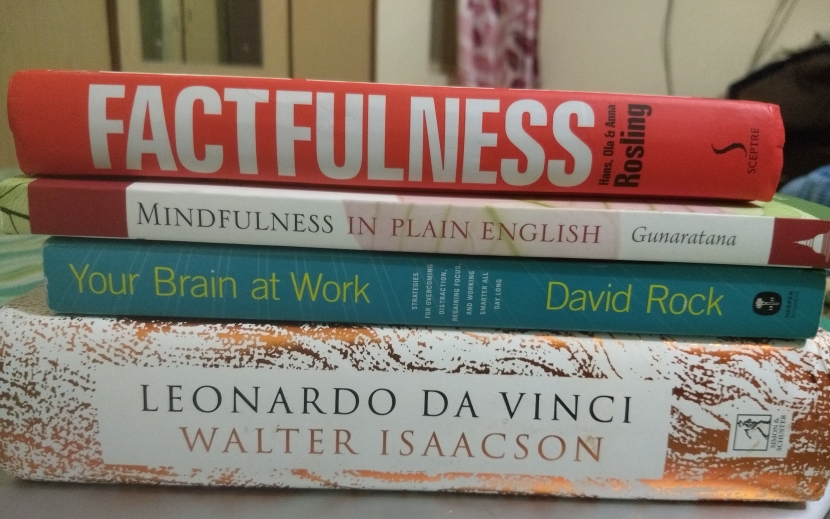Finally, there is an answer !

I have an interesting reading list lined up for this month. Of all the four, the one that came as a very high recommend is Factfulness by the Roslings from Sweden (Hans, Ola and Anna). Hans’ TED talk is one of the most widely watched talks. In it, Hans shows with nice bubble charts how most of the people around the world have a very wrong view of the world and hence urges people to develop a fact-based world view. Of course, not everything is perfect and never well be, but if you were to ask someone “Is the world becoming a worse place to live ?”, the general answer is “Yes, it is”, however, Hans book will show you such an answer is wrong !
Living in India, one can see the bright and dark sides of everything almost instantaneously. You can go to the top floor of a five star hotel and looking at the window you will be greeted with slums, or travel from airport to the city and you will be greeted with poverty, richness, cows all at the same time. I always wondered how can people be so mean to outside world ? It is not very difficult to find people traveling in nice cars throwing garbage on the roads or a rich person spending thousands on a puja while hundreds wait out begging for food. In my mind, I always thought this is a culture problem and probably here to stay with us for very long. It is common for Westerners to think that Indians don’t honor commitments. In most of the cases the deadlines for work is given as friday end of day, knowing that this automatically means the actual deadline is monday morning and many more.
I had several theories imagined and one of which was Abraham Maslow’s hierarchy of needs. The reason, I thought, that developing cultures behaved differently compared to developed cultures was because there exists a natural progression as per Maslow’s hierarchy. As the lowest level, things like security, food and shelter were very important and only when those needs are met, people will move to the next level. Only at the higher levels people have luxury to think of aesthetics, art, self-realization etc., In some sense, this explanation fits well however, there is still some subjectivity around this.
After reading Factfulness, it became clear to me, how the world works. Hans splits the world into four levels. People on level 1, live on less than or equal to $1 a day. $8 for level 2, $32 for level 3 and $64 for level 4. From the data, Hans shows, Mozambique is today where India was 30 years ago. India is a level 2 country and slowly transitioning to level 3. Sweden, US, UK, South Korea, Japan and some others are at level 4. At level 4, an additional dollar of income does not make any different to life style. And hence, we see the level 4 countries have different priorities than the lower levels.
Now, this to me, explains a lot of issues which I thought were down to culture. Why people don’t obey traffic rules in India ? It is because people at level 2 and level 3 have enough money to buy a vehicle and at such starting levels traffic systems and awareness is not well developed. For me, this was a profound discovery. This means to say, in another two to three generations, there is a chance India will transition to level 4 and we will be no different to Sweden, US or UK. How comforting is that to know that your future generations don’t have to travel to foreign countries to have a good life ? 😉 The next time someone complains Indians don’t honor commitments ask them to wait for three generations, things will become normal :-).
I highly recommend everyone to read the book Factfulness to get a fact-based world view. It is good to know we live in a world that is making steady progress. 80% of all children now get vaccination, extreme poverty is declining at a fast pace, the average life expectancy today is 70 years and much more. Of course, not everything is perfect. It would be unjust to argue with people hit with tragedies like Syria or Afghanistan and tell them “Hey, don’t worry, on the whole, the world is a better place, you are just unlucky”.












